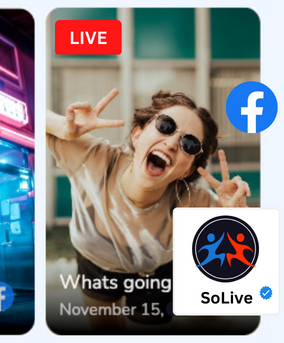The Importance of Closed Captioning for Video Content

Welcome! In this digital era, video content is king. However, the true queen is often overlooked - closed captioning. Understanding Closed Captioning is crucial for any content creator, and here's why.
Why Is Closed Captioning Important?
Accessibility
Closed captioning plays an integral role in making your content accessible to a wider audience. For the deaf or hard of hearing, and those with language barriers, captions are a necessity, not an option.
SEO Advantages
Closed captions aren't just for the viewers; they provide excellent SEO benefits too. As discussed in our article on Video Content Improving Your SEO Ranking in 2023, closed captions help your content get found and understood by search engines.
How Does Closed Captioning Improve Video Content?
Enhances Viewer Comprehension
Closed captioning plays a pivotal role in ensuring that your message reaches the audience precisely as intended. Here's how it enhances viewer comprehension:
- Clarity: Even in well-produced videos, some words may be difficult to catch due to various factors such as accent, speech speed, or technical jargon. Closed captioning deciphers these elements, ensuring every word and meaning is captured.
- Context: Captions can help provide context for what's being shown or discussed in the video. This is particularly beneficial in instructional or educational content where visual demonstrations need to be synchronized with verbal explanations.
- Noisy Environments: Watching videos in noisy surroundings can be challenging. Closed captioning comes to the rescue in such situations, ensuring viewers don't miss out on the information just because of the ambient noise.
Boosts Engagement
Closed captioning not only makes your videos accessible but also makes them more engaging. Here's how:
- Increases View Time: Studies suggest that videos with closed captions are watched significantly longer compared to those without. When viewers can read along with what's being spoken, they are more likely to stay engaged.
- Improves Recall and Retention: Reading along with the audio can enhance the learning experience and increase information retention, particularly in the case of educational or informational videos.
- Interactivity: With the advent of interactive closed captions, users can now engage with the captions by clicking on them to get more information or navigate to related content. This adds a layer of interactivity to your videos, as explored in our blog post about 10 Interactive Live Stream Tips for Boosting Audience Engagement.
Provides Flexibility
In today's world, video content is consumed in a variety of settings, and not all of them are suitable for playing out loud. Closed captions provide the necessary flexibility for these circumstances.
- Silent Environments: For viewers in quiet places like libraries or offices, or late at night when others are sleeping, closed captions allow them to consume video content without disturbing their surroundings.
- Multitasking: When viewers are multitasking and can't fully focus on the audio, closed captions ensure they can still follow along with the video content.
- Language Learning: For people learning a new language, closed captions in that language can aid comprehension and language acquisition.
In a nutshell, closed captioning is not just an optional add-on but a valuable tool that significantly enhances the quality and reach of your video content.
Closed Captioning and SEO
Google Can’t Watch Videos, But It Can Read Them
As intelligent as Google's web crawlers are, they're not capable of watching and understanding videos. They work primarily by reading and indexing text on the web. This is where closed captions come into play:
- Textual Content: Closed captions translate the audio of your video into text, providing a transcript that Google's crawlers can read and index. This means that the content in your video becomes searchable and can contribute to your SEO strategy.
- Keyword Optimization: Captions also provide you with the opportunity to include relevant keywords that your target audience might use when searching for your content. But remember, the captions need to be accurate and represent the video content, as Google penalizes misleading practices.
- Image and Video Search: Having closed captions can also boost your presence in Google's image and video searches. When users search for specific phrases present in your captions, there's a better chance of your video content appearing in the results.
For more about how video content can improve your SEO ranking, check out our guide on the topic.
Longer View Times
Google's algorithm uses various factors to determine the quality of content, and one such metric is user engagement, which includes view times. Here's how closed captions influence this:
- Improving Accessibility: By making your video content accessible to a wider audience, closed captions naturally increase the potential for longer view times. This includes not only individuals with hearing impairments but also those facing language barriers or watching in sound-sensitive environments.
- Boosting Comprehension: As closed captions improve viewer comprehension, they enhance the user experience. When viewers understand and enjoy the content, they're more likely to watch it for longer durations.
- Reducing Bounce Rates: Videos with closed captions can reduce bounce rates, as viewers are less likely to leave the video midway if they can follow along with the captions. Lower bounce rates signal high-quality content to search engines, which can improve your SEO ranking.
In essence, closed captions not only enhance the accessibility and user experience of your video content but also contribute significantly to your SEO strategy. So, don't overlook this valuable element in your video marketing toolbox.
The Role of Closed Captioning in Video Transcription
Closed captions and video transcriptions go hand in hand. They both contribute to the accessibility and SEO optimization of your video content, as discussed in The Importance of Video Transcription for SEO and Accessibility.
Creating Closed Captions for Your Video Content
The thought of creating closed captions for your video content might seem intimidating at first, but the process is surprisingly straightforward, thanks to the multitude of tools and services available today.
Automatic Captioning Services
Many video hosting platforms, such as YouTube, offer automatic captioning services. This AI-based system transcribes the audio of your video into text. However, the accuracy can vary, particularly with complex terminology or accents. It's always a good idea to review and edit these auto-generated captions to ensure their accuracy.
Professional Transcription Services
If your video content requires a higher degree of accuracy or if it contains industry-specific jargon, professional transcription services can be an excellent choice. These services provide human-generated transcriptions, ensuring higher accuracy and proper context understanding.
DIY with Software
You also have the option to manually create captions using various software applications. These offer control over the accuracy of the captions and the synchronization with the video. Some popular choices are Subtitle Edit, Aegisub, and Subtitle Workshop.
Integrating Captions into the Video
Once you have the transcription ready, it needs to be timed with the video and integrated into it. Most video editing software provides the option to add subtitles or closed captions. However, if your video hosting platform supports it, you can upload the transcript file separately, and it will automatically synchronize with the video.
In our blog on 5 Essential Tools for Managing and Embedbing Videos on Your Website, you can find more about how to seamlessly integrate video content into your digital assets.
Remember, creating captions for your video content is more than just a compliance necessity—it's an effective strategy to enhance your viewers' experience, expand your reach, and improve your video SEO. So, don't think of it as an afterthought, but as an integral part of your video production process.
Implementing Closed Captioning in Your Video Marketing Strategy
If you haven't already, it's time to embrace closed captioning in your video marketing strategy. Our article on Creating a Video Marketing Strategy for Small Businesses provides some excellent insights on how you can effectively incorporate this.
Closing Thoughts
Understanding the importance of closed captioning is fundamental in this age of digital communication. By focusing on accessibility and viewer engagement, you are not only catering to a wider audience but also optimizing your video content for better SEO. So, don’t underestimate the power of those tiny subtitles at the bottom of your screen. They can do wonders for your video content!
FYI: You can embed Facebook Live automatically with the EmbedVidio platform. Start a free trial and display your social media video widgets now.

Embed live video feeds on your website automatically!
Try EmbedVidio and automatically add Facebook, YouTube, and Twitch live video feeds to your website.
All features included with every planFAQs
How does closed captioning contribute to SEO?
Closed captioning provides text that search engines can crawl, thereby enhancing your SEO. It also improves viewer engagement, which is a positive ranking factor.
Is closed captioning only beneficial for the hearing impaired?
While it's primarily used to assist the hearing impaired, closed captioning also benefits viewers with language barriers, those watching in noisy or sound-sensitive environments, and those seeking improved comprehension.
Is it mandatory to include closed captions in my video content?
While it's not legally mandatory for most online video content, it's considered a best practice for accessibility and SEO.
How can I add closed captions to my videos?
There are many online tools and services available that can help you create and add closed captions to your videos. Some video platforms also offer automated captioning services.
Do closed captions improve viewer engagement?
Yes, studies show that videos with closed captions have higher engagement rates as they provide better comprehension and flexibility for the viewer.